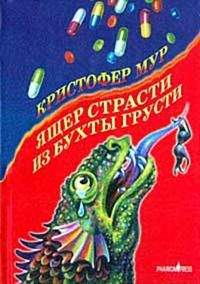Энни Макки - На одной волне: Как управлять эмоциональным климатом в коллективе
199
СНС и гипоталамо-гипофизо-надпочечная ось: см. Robert M. Sapolsky, Why Zebras Don’t Get Ulcers, 3rd edition (New York: Harper Collins, 2004); LeDoux, Synaptic Self.
200
Возбуждение СНС и артериальное давление: см. Sapolsky, Why Zebras Don’t Get Ulcers; LeDoux, Synaptic Self; V. DeQuattro and M. Feng, “The Sympathetic Nervous System: The Muse of Primary Hypertension,” Journal of Human Hypertension 16 (2002): с. S64–S69.
201
Возбуждение СНС и кровоток: см. Sapolsky, Why Zebras Don’t Get Ulcers.
202
Возбуждение СНС и активность левой префронтальной области мозга: LeDoux, Synaptic Self; J. Davidson, Daren C. Jackson, and Ned H. Kalin, “Emotion, Plasticity, Context and Regulation: Perspectives from Affective Neuroscience,” Psychological Bulletin 126 (2000): с. 890–909; Richard J. Davidson, личное сообщение, 2003.
203
Кортизол и иммунная система: см. McEwen, “Protective and Damaging Effects of Stress Mediators”; Clifford Saper, “The Central Autonomic Nervous System: Conscious Visceral Perception and Autonomic Pattern Generation,” Annual Review of Neuroscience 25 (2002): с. 433–439; Melissa A. Rosenkranz, Daren C. Jackson, Kim M. Dalton, Isa Dolski, Carol D. Ryff, Burt H. Singer, Daniel Muller, Ned H. Kalin, and Richard J. Davidson, “Affective Style And In Vivo Immune Response: Neurobehavioral Mechanisms,” Proceedings of the National Academy of Science, 100 (2003): с. 11148–11152.
204
Влияние кортизола на нейрогенез и явление «переутомления» нервных клеток: см. Bruce McEwen, “Protective and Damaging Effects of Stress Mediators”; Sapolsky, Why Zebras Don’t Get Ulcers; LeDoux, Synaptic Self; Sapolsky, “Why Stress Is Bad for Your Brain”; James E. Zull, The Art of Changing the Brain: Enriching Teaching by Exploring the Biology of Learning (Sterling, VA: Stylus, 2002); Peter S. Erikson. Ekaterina Perfilieva, Thomas Bjork-Eriksson, Ann-Marie Alborn, Claes Nordburg, Daniel A. Peterson, and Fred H. Gage, “Neurogenesis in the Adult Human hippocampus,” Nature Medicine 4 (1998): с. 1313–1317; Richard J. Davidson, личное сообщение, 2003.
205
Возбуждение СНС и активация правой префронтальной области мозга: см. Richard J. Davidson, Paul Ekman, Clifford D. Saron, Joseph A. Senulis, and Wallace V. Friesen, “Approach-Withdrawal and Cerebral Asymmetry: Emotional Expression and Brain Physiology I,” Journal of Personality and Social Psychology 58, № 2 (1990): с. 330–341.
206
Нейронная активность и чувство подавленности: См. Andrew J. Tomarken, Richard J. Davidson, Robert E. Wheeler, and Robert C. Doss, “Individual Differences in Anterior Brain Asymmetry and Fundamental Dimensions of Emotion,” Journal of Personality and Social Psychology, 62, № 4 (1992): с. 676–687.
207
Иммунодепрессивное воздействие секреции кортизола: см. Sally Dickerson and Margaret Kemeny, “Acute Stressors and Cortisol Responses”; Segerstom and Miller, “Psychological Stress and the Human Immune System”; Nikolai Petrovsky, “Towards a Unified Model of Neuroendocrine-Immune Interaction,” Immunology and Cell Biology 79 (2001): с. 350–357; Gregory E. Miller, Sheldon Cohen, Sarah Pressman, Anita Barkin, Bruce S. Rabin, and John J. Treanor, “Psychological Stress and Antibody Response to Influenza Vaccination: When Is the Critical Period for Stress, and How Does It Get Inside the Body?” Psychosomatic Medicine 66, № 2 (2004): с. 215–223.
208
Власть, самоконтроль и иммуноглобулин: см. David McClelland and Richard Boyatzis, “Leadership Motive Pattern and Long Term Success in Management,” Journal of Applied Psychology 67, № 9 (1982): с. 737–743; David C. McClelland, S. E. Locke, R. M. Williams, and M. W. Hurst, “Power Motivation, Distress and Immune Function” (unpublished manuscript, Harvard University, 1982).
209
Хронический стресс и иммунные заболевания: там же.
210
Возбуждение СНС и восприимчивость к заболеваниям: Richard Davidson, личное сообщение, 2003; Sapolsky, Why Zebras Don’t Get Ulcers; McEwen, “Protective and Damaging Effects of Stress Mediators.”
211
Возбуждение СНС и сердечные заболевания: см. DeQuattro and Feng, “The Sympathetic Nervous System.”
212
Роль ПСНС: см. Sapolsky, Why Zebras Don’t Get Ulcers; McEwen, “Protective and Damaging Effects of Stress Mediators.”
213
Восстановление и выздоровление как результат активации ПСНС: там же.
214
Хронический стресс, нарушения сна и другие расстройства: см. Sapolsky, Why Zebras Don’t Get Ulcers.
215
Хронический стресс и снижение творческих способностей: см. McEwen, “Protective and Damaging Effects of Stress Mediators.”
216
Отличия в реакции женского организма на стресс: см. Shelly E. Taylor, Laura C. Klein, Brian P. Lewis, Tara L. Gruenewald, Regan A. R. Gurung, and John A. Updegraff, “Biobehavioral Responses to Stress in Females: Tend or Befriend, Not Fight or Flight,” Psychological Review 107 (2002): с. 411–429.
217
Потребность во власти: см. David C. McClelland, Human Motivation (Glenview, IL: Scott, Foresman & Co., 1985).
218
Генетические различия в подверженности стрессу: см. Nigel Nicholson, Executive Instinct: Managing the Human Animal in the Information Age (New York: Crown Business, 2000).
219
Экспрессия генов и генетическая предрасположенность: см. Robert Lickliter and Hunter Honeycutt, “Development Dynamics: Toward a Biological Plausible Evolutionary Psychology,” Psychological Bulletin 129, № 6 (2003): с. 819–835; Eric H. Davidson, Genomic Regulatory Systems: Development and Evolution (New York: Academic Press, 2001); Redford B. Williams, John C. Barefoot, James A. Blumenthal, Michael J. Helms, Linda Luecken, Carl F. Pieper, Ilene C. Siegler, and Edward C. Suarez, “Psychosocial Correlates of Job Strain in a Sample of Working Women,” Archives of General Psychiatry 54 (1997): с. 543–548.
220
Экспрессия генов: см. Williams et al., “Psychosocial Correlates of Job Strain in a Sample of Working Women.”
221
Профессиональное выгорание, экспрессия генов и корпоративные тренинги: там же, с. 621. См. также Cary Cooper, Philip Dewe, and Michael O’Driscoll, Organizational Stress: A Review and Critique of Theory, Research, and Applications (Thousand Oaks, CA: Sage Publications, 2001).
222
Активация ПСНС подавляет СНС: см. Sapolsky, Why Zebras Don’t Get Ulcers; LeDoux, Synaptic Self; Davidson et al., “Emotion, Plasticity, Context, and Regulation.”
223
Заботливые отношения: см. Robert Sapolsky, Why Zebras Don’t Get Ulcers; Andreas Bartels and Semir Zeki, “The Neural Basis of Romantic Love,” NeuroReport 11, № 17 (2000): с. 3829–3834; Thomas R. Insel, “A Neurobiological Basis of Social Attachment,” American Journal of Psychiatry 154 (1997): с. 726–735.
224
Социальные связи способствуют уменьшению смертности: см. Ichiro Kawachi, B. Kennedy, and R. Glass, “Social Capital and Self-Rated Health: A Contextual Analysis,” American Journal of Public Health 89 (1999): с. 1187.
225
Трехполосные дурукули: см. John Allman, Aaron Rosin, Roshan Kumar, and Andrea Hasenstaub, “Parenting and Survival in Anthropoid Primates: Caretakers Live Longer,” Proceedings of the National Academy of Science 95 (1998): с. 6866–6869.
226
Влияние домашних животных на состояние сердечных больных: см. E. Friedmann. A. Katcher, J. Lynch, and S. Thomas, “Animal Companions and One-Year Survival of Patients Discharged from a Coronary Care Unit,” Public Health Reports 95 (1980): с. 307–312.
227
Воздействие ПСНС: см. Jay Schulkin, Neuroendocrine Regulation of Behavior (New York: Cambridge University Press, 1999); Sapolsky, Why Zebras Don’t Get Ulcers; McEwen, “Protective and Damaging Effects of Stress Mediators.”
228
Окситоцин и вазопрессин: см. Insel, “A Neurobiological Basis of Social Attachment”; Schulkin, Neuroendocrine Regulation of Behavior; C. Sue Carter and Margaret Altemus, “Integrative Functions of Lactational Hormones in Social Behavior and Stress Management,” Annals of the Academy of Science 807 (1997): с. 164–174.
229
Положительное воздействие окситоцина: см. Insel, “A Neurobiological Basis of Social Attachment”; LeDoux, Synaptic Self.
230
Социальное взаимодействие стимулирует ПСНС: см. Lisa Diamond, “Contributions of Psychophysiology to Research on Adult Attachment: Review and Recommendations,” Personality and Social Psychology Review 5 (2001): с. 276–295.
231
Нейронная активность в левой и правой префронтальной области мозга при переживании эмпатии и активном, вдумчивом восприятии действительности: см. Daniel Goleman, Destructive Emotions: How Can We Overcome Them? A Scientific Dialogue with the Dalai Lama (New York: Bantam Books, 2003); Richard J. Davidson, “Toward a Biology of Positive Affect and Compassion,”в Visions of Compassion: Western Scientists and Tibetan Buddhists Examine Human Nature, ed. Richard J. Davidson and Anne Harrington (New York: Oxford University Press, 2002), с. 107–130; Rosenkranz et al., “Affective Style and In Vivo Immune Response.”
232
Чувство эйфории: см. Paul Ekman, Richard J. Davidson, and Wallace V. Friesen, “The Duchenne Smile: Emotional Expression and Brain Physiology II,” Journal of Personality and Social Psychology 58, № 2 (1990): с. 342–353; F. Gregory Asby, Alice M. Isen, and U. Turken, “A Neuropsychological Theory of Positive Affect and Its Influence on Cognition,” Psychological Review 106, № 3 (1999): с. 529–550; Jerome Groopman, The Anatomy of Hope: How People Prevail in the Face of Illness (New York: Random House, 2004); Tomarken et al., “Individual Differences in Anterior Brain Asymmetry…”; Davidson et al., “Approach-Withdrawal and Cerebral Asymmetry”; Richard Davidson, Jon Kabat-Zinn, Jessica Schumacher, Melissa Rosenkranz, Daniel Muller, Saki F. Santorelli, Ferris Urbanowski, Anne Harrington, Katherine Bonus, and John F. Sheridan, “Alterations in Brain and Immune Function Produced by Mindfulness Meditation,” Psychosomatic Medicine 65 (2003): с. 564–570.
233
Прилежащее ядро (nucleus accumbens): см. Esther M. Sternberg, The Balance Within: The Science of Connecting Health and Emotions (New York: W. H. Freeman and Company, 2001).
234
Оптимизм и ЛПФО: см. Insel, “A Neurobiological Basis of Social Attachment”.
235
Возлюбленные и друзья: см. Bartels and Zeki, “The Neural Basis of Romantic Love.”
236
Активизация ПСНС: см. David C. McClelland and C. Kirshnit, Effects of Motivational Arousal on Immunofunction (unpublished manuscript, Harvard University, 1982); Jemmott, “Psychosocial Stress, Social Motives and Disease Susceptibility.”
237
Влияние положительных эмоций на гибкость и открытость мышления и внимательность: см. Barbara L. Fredrickson and Christine Branigan, “Positive emotions broaden the scope of attention and thought-action repertoires,” Cognition and Emotion (в печати); Michelle M. Tugade and Barbara L. Fredrickson, “Resilient individuals use positive emotions to bounce back from negative emotional experiences,” Journal of Personality and Social Psychology (в печати); Barbara L. Fredrickson, “Gratitude, like other positive emotions, broadens and builds,” в The Psychology of Gratitude, ed. Robert A. Emmons and Michael E. McCullough (New York: Oxford University Press, готовится к изданию); Barbara L. Fredrickson, Michelle M. Tugade, Christian E. Waugh, and Gregory Larkin, “What good are positive emotions in crises? A prospective study of resilience and emotions following the terrorist attacks on the United States on September 11th, 2001,” Journal of Personality and Social Psychology 84 (2003): с. 365–376; Barbara L. Fredrickson, “Positive Emotions and Upward Spirals in Organizational Settings,” в Positive Organizational Scholarship, ed. Kim Cameron, Jane Dutton, and Robert Quinn (San Francisco: Berrett-Koehler, 2003).



